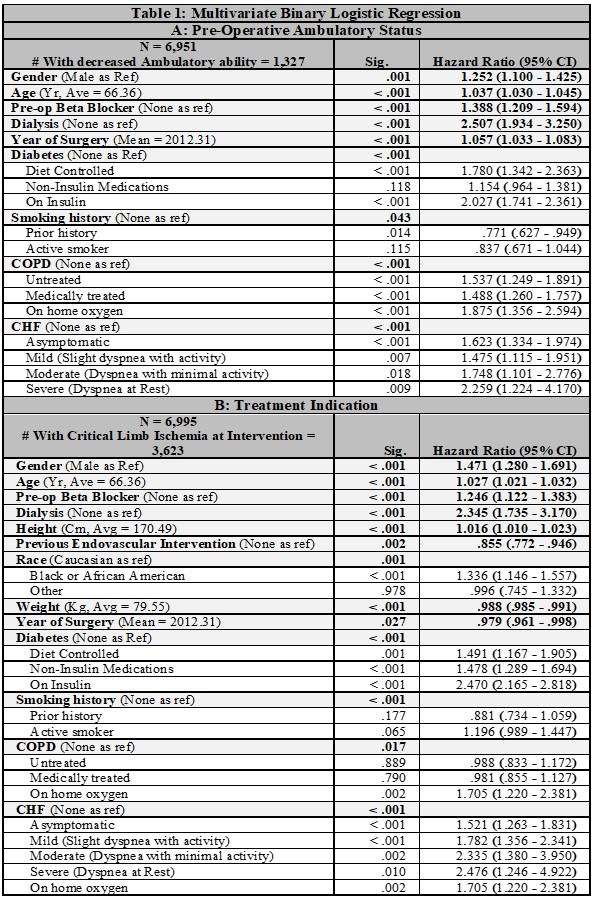Females Undergoing Femoropopliteal Bypass Present with More Advanced Peripheral Arterial Disease than their Male Counterparts
Justin D'Addario, Apostolos Tassiopoulos, MD, Angela Kokkosis, MD.
Stony Brook University School of Medicine, Stony Brook, NY, USA.
OBJECTIVES:
Peripheral arterial disease (PAD) is estimated to affect 15-30% of the female US population by 80 years of age. The female population with PAD has different incidences of traditional modifiable risk factors as compared to men and are suspected to be underdiagnosed due to atypical presentation, poor adherence to screening guidelines and an underappreciation of the prevalence of PAD in women. Additionally, women have a more rapid functional decline as part of the natural course of their disease. For these reasons, we used the national Vascular Quality Initiative (VQI) database of femoropopliteal bypasses to identify non-mortality related outcomes with female gender bias.
METHODS:
Patients who underwent femoral-popliteal bypass, without prior open revascularization or amputation, and with occlusive pathology (N = 7,139) were selected for analysis. X2 statistics were used to identify covariates with gender differences to be used for regression modeling. Of 184 variables analyzed, 70 showed gender bias and discharge location (DL), pre-operative ambulatory status (AS) and treatment indication (IND) were selected for multivariate binary logistic regression.
RESULTS:
Females were more likely to have decreased ambulatory ability (HR = 1.478, P < .001), be treated for critical limb ischemia (CLI) (HR = 1.542, P < .001) and be discharged to a nursing or rehabilitation facility (HR = 1.614, P < .001) at time of first bypass. Due to the association of AS and DL, DL was excluded from multivariate analysis. Multivariate regression showed female gender to be associated with increased risk for decreased ambulatory function at the time of first bypass (HR = 1.374, N = 6,951, P <.001) and that females were more likely to be to have CLI as the indication for treatment (HR = 1.471, P < .001) (Table 1).
CONCLUSIONS:
This study shows that female gender remains associated with decreased ambulatory function and more advanced femoropopliteal disease at the time of first bypass. These findings are independent of traditional modifiable risk factors, age and the year of intervention. While causation cannot be attributed to these findings, they support the notion that further investigation is needed to optimally diagnose and manage female patients with PAD. 
Back to 2018 ePosters




